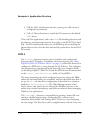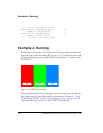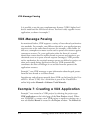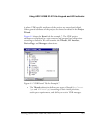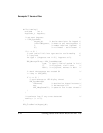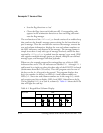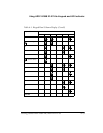
Example 7: Creating a VDK Application
6-6 Getting Started with ADSP-BF548 EZ-KIT Lite
The VDK runtime system is instructed to create and start execu-
tion of one instance of
BootThreadType as a boot thread when
initializing the application.
• The I/O Interface subsection defines one type of VDK device
driver (KeypadDriver) and instructs VDK to create one instance of
the device driver during application initialization.
• The Device Flags subsection defines the flag (KeypadFlag), which
is the means of synchronization between the interrupt-domain and
thread-domain code in KeypadDriver.
• The Messages subsection specifies the maximum number of VDK
messages that can exist simultaneously in the application and
directs VDK to allocate space for messages from the standard mem-
ory heap.
When the project was created, the Project Wizard generated header files
and skeleton code files for the two thread types and device driver type.
The wizard can produce C++, C, or assembly versions of the files; C ver-
sion was selected for this project. The wizard also generated the VDK.h and
VDK.cpp files. The header file contains pre-processor definitions that
enable or disable VDK features, enumerations for identifier values for the
application’s thread and device types, and gives access to the whole VDK
public API. The source file contains the VDK objects that correspond to
the application’s boot time thread, device, and device flag.



